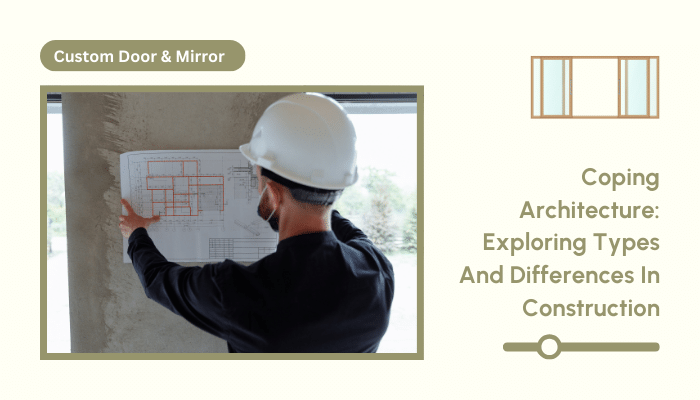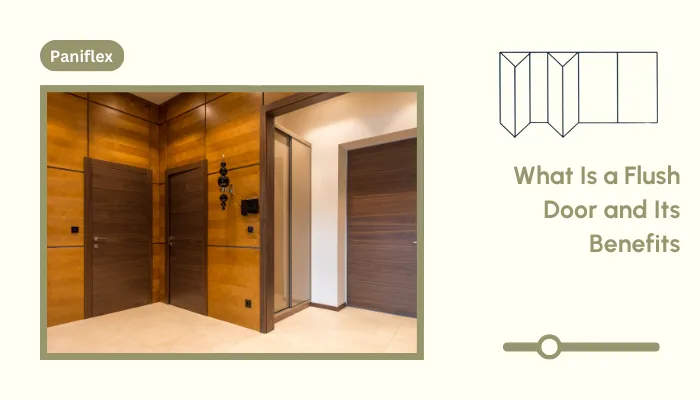Have you ever wondered why some buildings can better withstand harsh weather conditions or why some structures seem to have added elegance and charm? The answer often lies in subtle but crucial details, such as coping.
Coping is more than just a functional element; it is the unsung hero of architecture, contributing significantly to a building’s durability and visual appeal.
Ready to experience the benefits of custom closet doors? Explore our range of Paniflex products now.
This article analyses the role of coping in architecture, revealing its functional contributions, aesthetic and material options, and practical design considerations.
Introduction to coping in architecture and construction
Coping is the protective layer placed over the exposed tops of walls, roofs, or other structural elements.
Its main purpose is to protect these areas from water seepage by diverting rainwater away.
Without proper coping, water can penetrate the structure, causing damage and degradation over time.
Coping provides protection and contributes to a building’s overall appearance. Well-designed coping can make a structure visually appealing, defining and styling its exterior.
So, what are the functions and importance of coping? Let us discuss.
Functions And Importance of Coping
Coping is essential in construction because it plays multiple critical roles. Here are its functions and importance:
- Protection from water damage: Coping protects against water seepage along walls and weathering along roofs, ensuring that buildings’ walls and roofs are structural.
- Aesthetic upgrade: Coping gives walls and roofs a clean, finished appearance, making them aesthetically pleasing while not losing their functionality.
- Structural Life Extension: The coping mechanism safeguards structures from further decay and allows them to survive for longer, thereby requiring less frequent repair or replacement.
- Thermal protection: This coping helps protect the exposed building surfaces from severe temperature fluctuations. It, therefore, lessens the crack formation and the structural fatigue on the building due to such thermal stress.
- Structural Reinforcement: Additional support in coping sometimes enhances the strength of the load-bearing walls, making them more resilient to external forces, such as winds.
You deserve products that match your high standards, and Paniflex delivers just that. Their commitment to quality and innovation ensures that every custom door meets your expectations.
Now that we know the basics of coping, let us discuss the materials used to cope.
Materials Used For Coping
The choice of material is what makes coping effective and durable. Here are some of the most common ones:
- Stone: Natural stone, such as granite and sandstone, is very durable and has a timeless appeal. It can be used in both modern and traditional designs.
- Brick: This is ideal for blending with brickwork, making brick coping uniform in structures.
- Terracotta: This material brings a warm, earthy aesthetic and works well with specific wall types.
- Concrete: Pre-cast or cast-in-situ concrete coping, which can be used here, will be versatile and cost-effective.
- Metals: Aluminum and stainless steel copings are very lightweight and have excellent resistance to corrosion. However, they require proper installation care to account for thermal expansion.
Pre-cast concrete provides uniformity and ease of installation, but it requires quite some on-site effort.
One also has to take into consideration the structure’s design, budget, and climate. The choice of material is usually made considering all these factors.
Searching for a partner that understands your architectural needs? Paniflex supports architects, contractors, and designers in every stage of their process with custom doors and mirrors to help smooth out workflows and guarantee exceptional results.
Now, let us discuss the types of wall coping based on materials.
Types Of Wall Coping Based On Materials
Different materials bring different advantages to wall coping. Here are some of them:
- Natural stone coping: Durable and aesthetically versatile, options include granite, sandstone, limestone, and slate. These materials are quite effective in offering resistance against weathering as well as erosion while providing a timelessness in visual appeal.
- Concrete coping: Needs features such as control joints to avoid cracking. It is highly versatile and cost-effective, so customization in shape, size, and texture can fit a wide variety of architectural designs.
- Clay or terracotta coping: This material matches specific wall types for cohesive designs. Known for its natural finish, it also provides excellent thermal insulation, making it ideal for warm climates.
- Metal coping: Installation must account for thermal expansion to avoid issues over time. Materials like stainless steel and aluminum are lightweight, durable, and suitable for modern designs, offering a sleek and contemporary finish.
- Brick coping: It seamlessly integrates with the existing brickwork, giving it a uniform look. It is also fire—and weather-resistant, making it a practical choice for residential and commercial buildings.
- PVC or plastic coping: PVC options are lightweight and easy to install. They are also low-maintenance and suitable for areas with minimal load requirements. They are used in budget-sensitive projects or temporary structures.
In composite materials, strengths from separate materials are combined, such as concrete’s durability and stone’s aesthetic versatility.
This makes them a practical choice that compensates for cost with performance.
So, what should you consider when designing and installing? Let us find out.
Design And Installation Considerations
Coping should be designed and installed correctly to perform its function effectively.
This means that coping materials should be selected according to structural needs, environmental conditions, and aesthetic compatibility.
Here are some of the considerations:
- Weight and overhang: Provide sufficient overhang and weight to shed water properly without letting it penetrate the structure below. The overhang should also minimize splashback onto walls during heavy rain.
- Slope design: A slight slope improves drainage and prevents water collection. The slope angles should ensure smooth run-off without unbalancing structural equilibrium.
- Installation techniques: Employ mortar beds or masonry anchors and provide for thermal expansion in metal. Proper sealing techniques and the use of a more resilient joint material improve the lifespan of the coping.
- Material compatibility: The coping material selected should be compatible with the structural material of the wall or roof to avoid differential expansion or corrosion.
- Weatherproofing upgrades: Additional protection layers, such as waterproof membranes or coatings, may be installed to further protect against moisture and environmental aggression.
So, what is the difference between coping and capping? Let us understand.
Comparative Analysis: Coping vs. capping
| Aspect | Coping | Capping |
| Primary Purpose | Covers the top of walls or roofs to shed water. | Decorative finishes on pillars or posts. |
| Focus | Functionality and durability. | Aesthetic enhancement. |
| Material | Stone, concrete, metal, etc. | Ornamental materials like wood or decorative metals. |
| Installation | Requires precise methods to ensure water protection. | Focuses on appearance, simpler installation. |
| Application | Roofs, parapet walls, exposed structures. | Ornamental features, standalone posts |
Paniflex understands that every project is unique. Their custom doors fit seamlessly into your designs, adapting to any existing structure without modification. This means you can maintain the flow of your design while addressing spatial challenges with ease.
So, what are the factors you should consider when choosing the right coping material? Let us understand.
Choosing the right coping material
The best material is selected by balancing multiple factors to ensure optimal performance and design compatibility. Here’s how to choose the right coping material:
- Environmental conditions: Choose materials suited to local weather conditions.
- Structural requirements: Ensure compatibility with the building’s load-bearing needs.
- Aesthetic goals: Complement the design theme of the structure.
- Sustainability: Consider eco-friendly options such as recycled concrete and reclaimed stone. These alternatives reduce environmental impact while offering durability. For example:
- Bamboo is lighter and easier to install than stone but might need more frequent maintenance in rough climates.
- Composite materials made from recycled plastics combine strength with sustainability and align with green building certifications.
Now, let us understand the advantages and challenges of coping. Here are some of them.
Advantages And Challenges of Coping
Coping brings significant benefits, but there are also challenges to consider:
Advantages:
- Prevents water damage, enhancing durability.
- Adds aesthetic appeal with a polished look.
- Protects against decay, extending the structure’s lifespan.
Challenges:
- Material selection must balance cost, durability, and design.
- Installation requires technical precision and skilled labor.
Common mistakes:
- Poor slope design leads to water pooling.
- Using incompatible materials for environmental conditions.
- Overlooking thermal expansion in metals causes deformation.
Conclusion
Coping is more than a protection element: it’s really a design combination of form and function, enhancing the appearance and forming to ensure the required basic structural integrity.
Whether protecting a heritage building from the elements or designing an advanced, modern construction, good-quality coping solutions always pay off in the long term.
Ready to experience the benefits of custom closet doors? Explore our range of Paniflex products now.
Attention to detail and informed material choices are the most important aspects of designing buildings that are both functional and beautiful.
Transform your architectural vision into reality with Paniflex – where quality meets innovation for all your coping needs.






